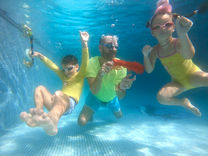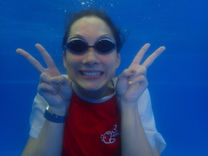Who is safe in the water today?

It’s deeply saddening and disappointing when you read the morning news or see it on TV that someone’s child got drowned. No matter whether he/she was a good swimmer or not! There is a number of reasons for this, but the most common ones are inappropriate behaviour in the water, lack of attention, as well as overestimation of people’s own skills and swimming capabilities.
Every year, when the swimming season starts, more than hundred children and adults drown in Serbia. The statistics say that, on average, almost every day we have one person who getting drowned. However, according to the World Health Organisation, Serbia is ranked 147th based on the number of drowned people per capita, which would mean that, on average, we are the nation of great swimmers. But is that really so?
It is a harsh reality that drowning happens very slowly yet it takes away the most precious ones very quickly. The most common victims are children. Again, the data shows that around 50% of accidental drowning of children happens in the public swimming pools. Most of these children are boys, usually under the age of four. On the other hand, a significant percentage of these fatal drownings happen also in our own, home-based pools.
Many parents think that if they put the swimming arm bands on their children’s arms and let them swim in the swimming pool or in the sea, or just to play in the shallow end, that they met all necessary safety measures. It doesn’t happen very often, but it can be that the arm bands lose air for some reason, or that their child decides to take them off in order to show off in front of his/her friends, or wearing them makes him/her feel uncomfortable…
Therefore, always keep an eye on what your children are doing when they are near or in the water, because one second is enough for a fatal accident.

Not long ago I was sitting in a small pool with my two kids, my little shark (2.5 years old) and my little fish (13 months old). We were playing together. I was between the two of them. At one point, I turned to my son to help him fix his goggles. At that very moment, I heard my wife shouting (who was only two steps away from me). I looked around, and I saw my little fish upside down in the pool with her head in the water and her legs above it. I pulled her out immediately. Fortunately, everything was ok with her because of my swift reaction. She also didn’t get scared or ended up swallowing a lot of water as she had been familiar with it since she was 4 months old. Now, if you ask me, how this happened, I wouldn’t be able to explain. It was only a brief second of shifting my attention to the other child.
No, please do not panic, but be aware that this could happen to you too and not just some random person in the news. Especially in case of teenagers, or those who “know” to swim well. Of course, we should not become their shadows lurking above their heads and stalking them while they are near or in the water. Actually, it is up to us, parents, aunts, uncles, and all those more experienced swimmers who are close to them to inform them about these misfortunate situations – to educate them. Certainly, they must learn how to swim first.
What is important to tell your children when they go swimming with their friends? They have to know that they are not lifeguards. That they must first protect themselves in those moments and then help the others in order to avoid a potential double tragedy. It may sound a bit selfish but if there is no lifeguard present or someone who is more experienced, what they need to do first is to find a floating device (a board, ball, plastic water balloon) or some kind of a rope (T-shirt, trousers, belt or even a branch) that they could throw to the person drowning.

Furthermore, children who take swimming lessons can also learn: advanced personal and lifesaving techniques through different games: turning to their side, turning in the water, floating with and without different aids and what to do after they jump or fall into the water. Today even, believe it or not, babies are taught these techniques as well.
Every professional swimming club should provide this type of education and training to their club members, no matter their age, as these can save their lives. Therefore, check if a club near you has them and if it does, enrol your child!
We must teach our children how to be safe near, on, and in the water.










































Comments